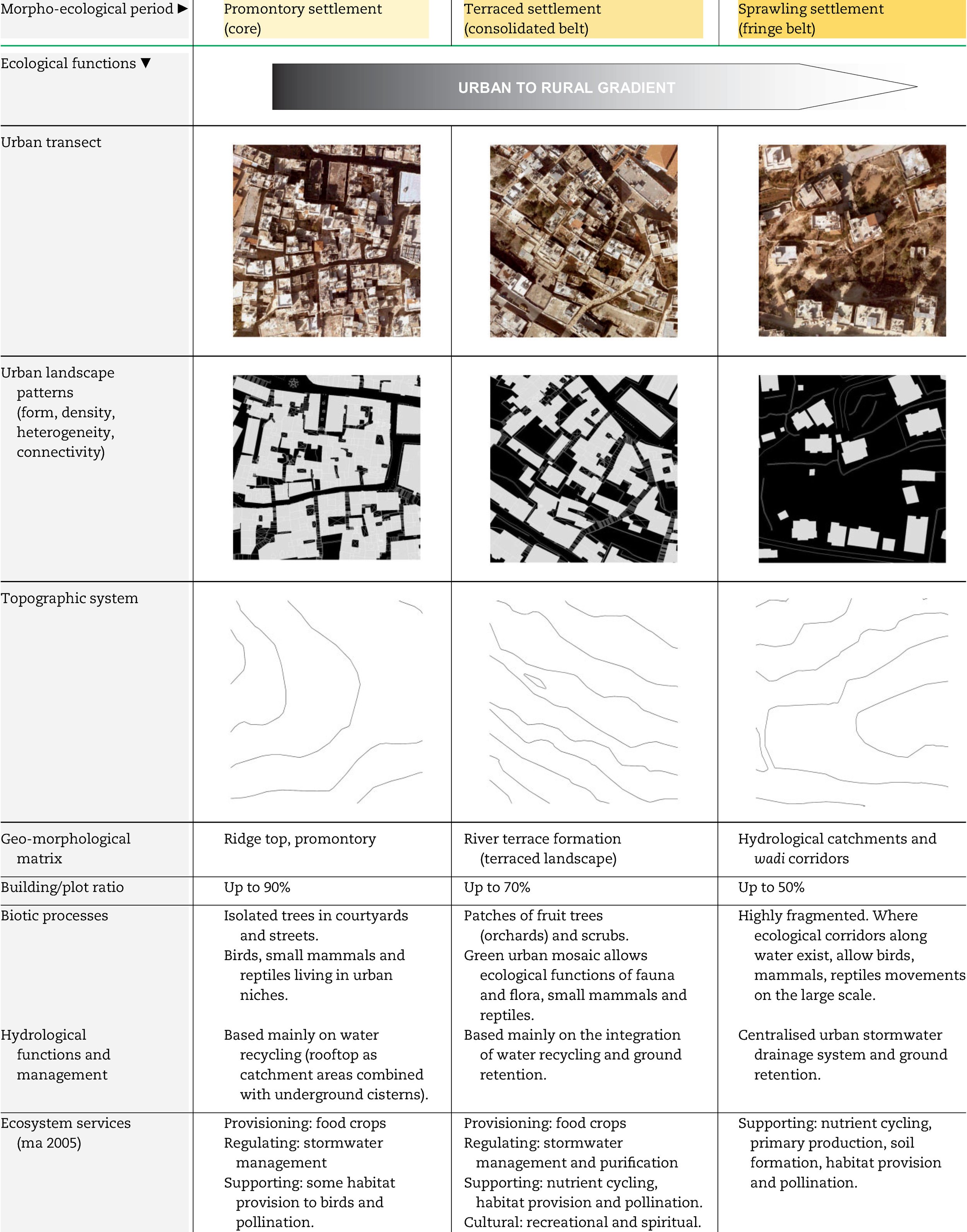BRIDGING URBAN MORPHOLOGY AND URBAN ECOLOGY: A FRAMEWORK TO IDENTIFY MORPHO-ECOLOGICAL PERIODS AND PATTERNS IN THE URBAN ECOSYSTEM
Palazzo E
Journal of Urban Ecology, 2022, 1–15, https://doi.org/10.1093/jue/juac007
ABSTRACT
In a perspective of exceptional environmental change, the role of unbuilt and green spaces to improve urban resilience has increasingly attracted the interest of the scientific community. The conceptualisation of cities as urban landscapes has drawn a parallel between their spatial and ecological dimensions. Both urban morphology and urban ecology have examined the structure of cities form. However, we still do not completely understand how anthropogenic processes and ecosystems have been dynamically interacting in the formation of the urban structure. Thus, this article carries out a comprehensive analysis of built and unbuilt spaces in a case study with the objective to reveal the underlying morpho-ecological periods and patterns in the urban ecosystem. Morphological periods (temporal analysis) and ecological patterns (spatial analysis) are examined in combination through the hypothesis of nested scales at different resolutions operated at the macro, meso and micro levels of the urban landscape. By identifying common denominators across urban morphology and landscape ecology, the study is also a contribution to interdisciplinary research. The proposed framework set up the foundation for a more systematic quantitative assessment of the urban ecosystem across different disciplinary traditions while supporting a new urban landscape design culture based on the evidence of ecological constructs. An accurate explanation of how built forms symbiotically interacted with the ecological dimensions of the landscape over time is also crucial to predict the effects of environmental change and promote future sustainable planning agendas.
KEYWORDS
urban landscape morphology, urban landscape ecology, GIS-based urban landscape analysis, typological process, urban ecosystem services
Morpho-ecological periods and corresponding ecological functions in Bethlehem urban landscape
OUTLINE
Introduction
Urban morphology and urban ecology: common grounds between theories and applications
Identifying morpho-ecological periods and patterns in the urban landscape
Combining urban morphology and urban ecology
Conclusions
Acknowledgements
References

